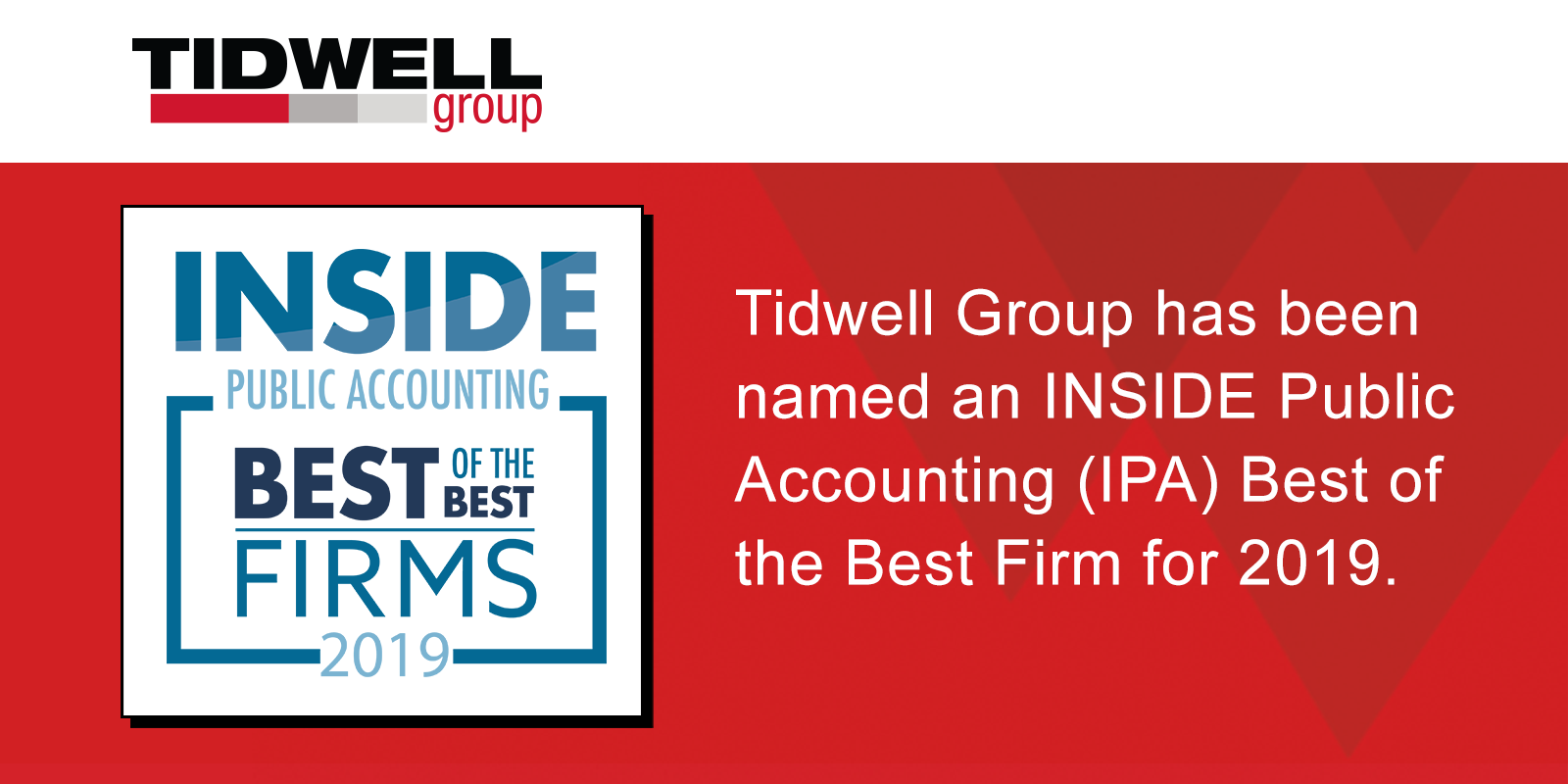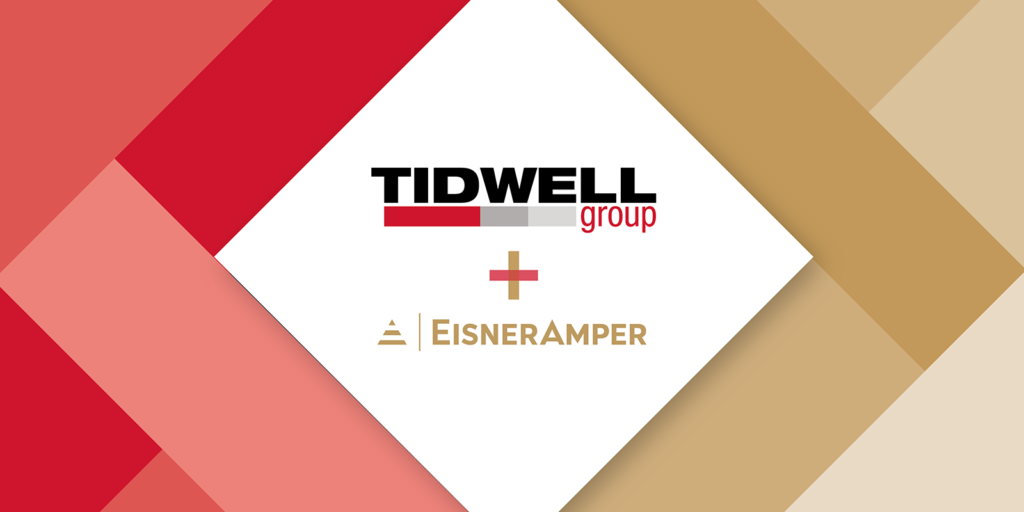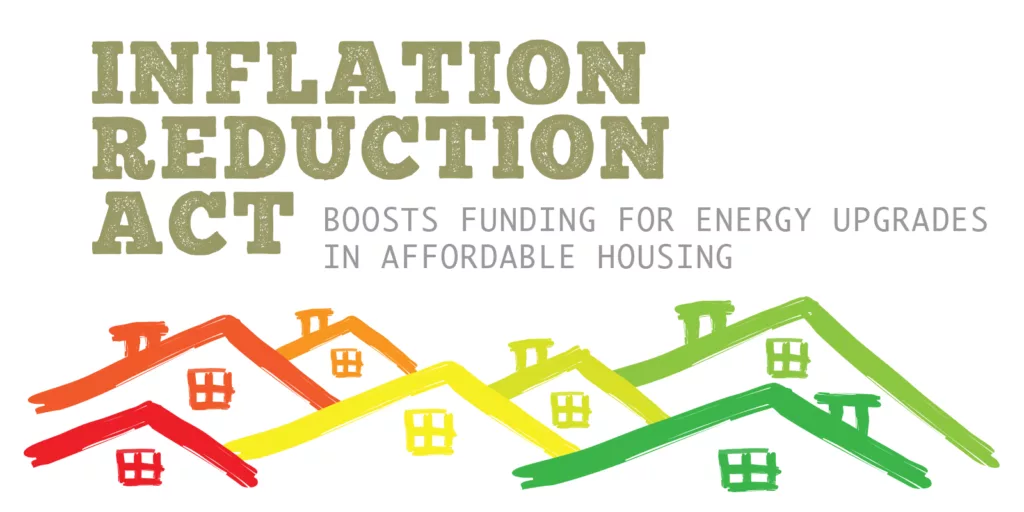By Ashley Northcutt and Chris Thomas
New IRS rules on the 100% bonus deprecation deduction may expand the benefits of cost segregation studies. This month, the IRS issued two sets of regulations under IRS Section 168(k) – final and proposed – that clarify qualifying property. The final regulations explain the “increase of the benefit and expansion of the universe of qualifying property, particularly to certain classes of used property.” Likewise, “the proposed regulations reflect and clarify the increase of the benefit and expansion of the universe of qualifying property, particularly to certain classes of used property.” The regulations impact taxpayers who take depreciation deductions on acquired qualified property that was placed in service after September 27, 2017.
Tidwell Group presents the following framework of bonus depreciation as a primer – in light of the new bonus depreciation regulations. The new rules provide clarity on the types of assets that may qualify for bonus depreciation where such assets may not have qualified based on past interpretations of the tax code.
On December 22, 2017, the Tax Cuts and Jobs Act (TCJA) was signed into law. The TCJA has had a tremendous impact on all industries, including the low-income housing industry.
The Beginning of Bonus Depreciation
Bonus depreciation was introduced by Congress in 2001, in an attempt to stimulate the economy. Bonus depreciation is a tax incentive that permits owners of qualified property (that is, property with a recovery period of 20 years or less) to deduct a percentage of the asset’s depreciable basis in the year of acquisition. Personal property and land improvements are eligible for bonus depreciation, although building core and shell assets are not.
The PATH Act (Protecting Americans Against Tax Hikes) legislation was in effect prior to the TCJA. The TCJA made two very significant changes to the bonus depreciation rules established under the PATH Act:
- The TCJA set bonus depreciation at 100% for qualified property placed-in-service between September 28, 2017 and December 31, 2022. After 2022, bonus depreciation rates gradually decline, as illustrated in the “Bonus Depreciation Table” in Figure 1.
- Bonus-eligible property now includes new construction, renovations, and acquisitions. Since its inception, bonus depreciation has historically only been available for new construction and renovation projects. By including acquisitions among bonus-eligible property types, the TCJA piqued the interest of investors focused on accelerated depreciation.
Figure 1: Bonus Depreciation Table
| Year | Dates | Post-TCJA Bonus | |
| 2017 | 1/1/2017 – 12/31/2017 | Acquisition | Written binding contract (WBC) signed before 9/28/17: NONE |
| WBC signed after 9/27/17: 100% | |||
| New Construction/Renovation | Construction began before 9/28/17: 50% | ||
| Construction began after 9/27/17: 100% | |||
| 2018 | 1/1/2018 – 12/31/2018 | Acquisition | WBC signed before 9/28/17: NONE |
| WBC signed after 9/27/17: 100% | |||
| New Construction/Renovation | Construction began before 9/28/17: 40% | ||
| Construction began after 9/27/17: 100% | |||
| 2019 | 1/1/2019 – 12/31/2019 | Acquisition | WBC signed before 9/28/17: NONE |
| WBC signed after 9/27/17: 100% | |||
| New Construction/Renovation | Construction began before 9/28/17: 30% | ||
| Construction began after 9/27/17: 100% | |||
| 2020 | 1/1/2020 – 12/31/2020 | N/A | 100% |
| 2021 | 1/1/2021 – 12/31/2021 | N/A | 100% |
| 2022 | 1/1/2022 – 12/31/2022 | N/A | 100% |
| 2023 | 1/1/2023 – 12/31/2023 | N/A | 80% |
| 2024 | 1/1/2024 – 12/31/2024 | N/A | 60% |
| 2025 | 1/1/2025 – 12/31/2025 | N/A | 40% |
| 2026 | 1/1/2026 – 12/31/2026 | N/A | 20% |
Look-back Cost Segregation Studies are Key to Finding Deductions
Cost Segregation is an engineering-based analysis in which fixed assets are isolated and reclassified into shorter-lived tax categories. Cost segregation studies result in accelerated depreciation, tax deferral, and increased cash flow. Studies may be performed throughout the real estate life cycle on acquired, renovated, or newly constructed properties. Many studies are commissioned when properties are initially placed-in-service, but the IRS also permits “look-back” studies. Look-back studies allow taxpayers to retroactively claim all the depreciation that they would have received had they performed a study when the property was originally placed-in-service.
Written Binding Contracts on Acquisitions Drive Qualification
Tidwell Group stresses the importance of a written binding contract (WBC). A WBC must exist after September 27, 2017 in order to be eligible for bonus depreciation on acquisitions. If a WBC—as defined by what is enforceable under state law—was in effect prior to September 27, 2017, the property is not eligible for 100% bonus under the TCJA. This is an important consideration as property owners may be very interested in a “look-back” study as it focuses on property placed-in-service in the past. The “catch-up” depreciation accrued will depend on the legislation in place at the time the building was placed-in-service making September 27, 2017 still an important date for consideration.
Acquisition of Property – Case Study:
Consider the acquisition of a multi-unit property. The WBC was signed on December 3, 2017 and the depreciable basis was $10.8 million. A cost segregation study was not performed at the time of the acquisition. The client requested that a look-back cost segregation study be performed to take advantage of the bonus depreciation allowed under the TCJA.
Using a look-back cost segregation study, the client was able to accelerate 30% of the depreciable basis to a 7-year MACRS class life and 12% to a 15-year MACRS class life.
| First Year Tax Savings | 10 Year Net Present Value |
| $1,488,872 | $1,203,504 |
Under the prior PATH Act rules, acquisitions like this would be ineligible for bonus depreciation.
| First Year Tax Savings | 10 Year Net Present Value |
| $35,508 | $896,499 |
The Impact of Bonus Depreciation on Renovation Projects and New Construction
Similar to acquisitions, the crucial date for determining bonus depreciation eligibility on new construction and renovation projects is September 27, 2017. Tidwell Group cautions that WBC is a factor on new construction and renovation projects if a third-party general contractor is retained. The initiation of “substantial construction” is important. While most new construction projects were initiated well past September 27, 2017, bonus depreciation eligibility is still a relevant concern for multi-year phased construction projects that are included under one contract.
For projects in which substantial construction began after September 27, 2017, TCJA rules are effective and the projects are eligible for 100% bonus depreciation. This also applies to renovations performed on “new-to-you” acquisitions.
However, if substantial construction began before September 28, 2017, such as in a multi-year phased construction project, the pre-existing PATH Act phase-down rules apply as follows:
- Placed-in-Service by 12/31/17 50% Bonus
- Placed-in-Service by 12/31/18 40% Bonus
- Placed-in-Service by 12/31/19 30% Bonus
- Also applies to new spend on renovations post-acquisition
In general, taxpayers should understand that substantial construction refers to physical work of a significant nature. Design, planning, zoning, and similar activities are not considered substantial construction.
The New Tax Rules Bring Attention to the Benefits of Cost Segregation Studies
With the new bonus depreciation rules offering greater clarity on certain aspects of IRC Section 168(k), they have also expanded the usefulness of a cost segregation study. Cost segregations studies are engineering-based and have historically helped owners provide the documentation and support needed to accelerate property lives into the 5, 7, and 15-year asset categories in order to capture bonus depreciation.
Prior to the TCJA, a cost segregation study on a smaller property might not have provided a sufficient return on investment. With acquisitions eligible for 100% bonus under the TCJA, smaller-basis properties are becoming strong candidates for cost segregation studies.
Consider a small multi-unit property, acquired with a depreciable basis of $1.5 million. Engineers are able to move 13 percent to 5-year depreciation and 10 percent to a 15-year timeline. Note that post-TCJA, it is well worth performing a cost segregation study, whereas pre-TCJA, a study may not have been warranted.
| Pre-TCJA | Post-TCJA | |
| Additional Cash Flow (Year 1) | $13,151 | $116,432 |
| 10-Year Net Present Value | $67,147 | $93,675 |
Investors in larger-scale projects are seeing commensurate larger-scale savings. Consider the new construction of a multifamily garden-style apartment complex with a depreciable basis of $5 million. In a cost segregation study, 15% of assets were moved into 5-year class life, and another 10% moved into 15-year class life. The impact of 100% bonus depreciation under the TCJA is staggering.
| Pre-TCJA | Post-TCJA | |
| Additional first-year cash flow | $160,994 | $421,359 |
| 10-year Net Present Value | $240,919 | $304,430 |
Finally consider a very large project, a high-rise office building with 23 tenants and a 5-story parking structure. The building’s depreciable basis was $24,570,386 and engineers moved 9.5% into 5-year class life and 0.3% into 15-year class life.
| Pre-TCJA | Post-TCJA | |
| Additional first-year cash flow | $149,598 | $788,932 |
| 10-year Net Present Value | $579,323 | $640,924 |
Do Not be Blindsided by Depreciation Recapture
Tidwell Group points out that the above examples are present value calculations and do not take into account depreciation recapture. Depreciation recapture will not come into play until the property is eventually sold. The gain on sale will be increased as the asset’s tax basis is reduced by the depreciation taken. Part of the gain will be taxed favorable capital gain rates of 15% or 20 %. The gain that is attributable to the depreciation taken will be “recaptured” and taxed at less favorable rates, 25 or up to 37 % of ordinary rates. Accordingly, it is important to consult a tax advisor knowledgeable in depreciation recapture when determining hold strategy for an asset.
Qualified Improvement Property (QIP) – the Asset that Got Away
One asset category that should have qualified for 100% bonus depreciation is Qualified Improvement Property (QIP). QIP is defined as any improvement to an interior portion of a building which is nonresidential real property if the improvement is placed-in-service after the date the building was first placed-in-service by a taxpayer. Under the TCJA, QIP replaced:
- Qualified leasehold improvements
- Qualified restaurant improvements; and
- Qualified retail improvement property.
The TCJA contains an unfortunate drafting error. The recovery period of QIP was intended to be 15-years. Therefore, it would have been eligible for bonus depreciation (since assets with a class life of 20-years or less are bonus-eligible.). However, in the drafting process, QIP was erroneously left with a 39-year recovery period. Unfortunately, unless or until Congress passes a technical correction bill, QIP is ineligible for bonus, and it remains firmly among 39-year assets unless accelerated to 5- or 7-year class lives through a cost segregation study. It is crucial for taxpayers to understand that, at this point, the only way to claim bonus depreciation on tenant-improvements is through a cost segregation study.
Section 179
Section 179 is an entity-level election for “trade or business” that permits the full purchase price of business equipment to be written off in the year of purchase. The TCJA expanded the scope of Section 179-eligible assets to include the following improvements to nonresidential building systems placed-in-service after the building was placed-in-service.
Qualified Improvement Property:
- Roofs
- HVAC
- Fire protection, alarm and security systems
This opened up a new expensing strategy for commercial real estate owners, particularly as the dollar limitation of the election was boosted from $510,000 to $1 million. New and acquired assets are eligible for expensing under Section 179.
Figure 2: Comparison of Section 179 and Bonus Depreciation
| Section 179 Expensing | Section 179 Expensing | |
| Applies to New Assets | ✓ | ✓ |
| Applies to Used Assets | ✓ | ✓ |
| Applies to Personal Property | ✓ | ✓ |
| Represents 100% Expensing of Asset | ✓ | ✓ |
| Applies to Qualified Improvement Property | ✓ | |
| Applies to Commercial Roofs, HVAC | ||
| Fire Protection, Security Systems | ✓ | ✓ (only if QIP- see QIP section above) |
| May Use to Take an Overall Tax Loss | ✓ | |
| Requires an Affirmative Election Made | ||
| in the Year the Asset is Placed-in-Service | ✓ | |
| Can Be Used Retroactively Through CSS Look-Back Study | ✓ | |
| Permits Related-Party Acquisitions | ✓* | |
| Associated Expensing Limit (2018 — $1M) | ✓ | |
| Associated Phase Out (2018 — $2.5M) | ✓ | |
| *May not apply on “used” property acquired from related parties. |
The Interest Deduction Limitation under the TCJA may impact bonus eligibility.
Effective January 1, 2018, this provision subjects taxpayers to a limitation on deductible interest expense. The deductible amount is capped at 30% of adjusted taxable income after certain adjustments. This may present good news for smaller firms: If a firm’s three-year average annual gross receipts are $25 million or less, it is completely exempt from the deduction limitation and may depreciate property using MACRS class lives as usual.
The Approved Methods for Depreciation
MACRS, or Modified Accelerated Cost Recovery System, is the IRS-approved method to accelerate depreciation on business equipment. MACRS provides an asset classification system delineating the number of years of depreciation for each asset type.
Within MACRS, there are two depreciation systems – the General Depreciation System (GDS) and the Alternative Depreciation System (ADS). Entities using the ADS method are not eligible to apply bonus depreciation.
In addition, taxpayers who fall into one of the following categories may be able to “elect out” of the limitation: real property development, redevelopment, construction, reconstruction, acquisition, conversion, rental, operation, management, leasing or brokerage trade or business. If a taxpayer chooses to elect out, real property must be depreciated using ADS (Alternative Depreciation System) as follows:
- Residential real property assets – 30-year straight line
- Nonresidential real property assets – 40-year straight line
- Qualified Improvement Property – 40-year straight line
Again, bonus-eligible property must have a recovery period of 20-years or less. While assets subject to ADS are not eligible for bonus depreciation, the interest deduction limitation, generally, is not impacted. The RPTOB election causes buildings to be depreciated using ADS but has no effect on the other assets. The RPTOB election is available and bonus depreciation is generally allowable on personal property and land improvements.
Tidwell Group – at the Crossroads of Bonus Depreciation and Low-Income Housing
The TCJA will have an even more significant impact on low-income housing constituents for several years. The tax implications of the depreciation deduction rules can be complex to apply – even in light of the clarification provided by the new rules this month. Having a sound cost segregation study performed on any renovation, new construction, or acquisition affords real estate owners the ability to fully benefit from bonus depreciation. Tidwell Group recommends seeking the tax advice of CPAs who are well-versed in low-income housing property issues to determine the role of bonus depreciation as part of a comprehensive tax strategy.
For more information, contact Ashley Northcutt or Chris Thomas to discuss your current situation.

Tax Partner

Austin Office Managing Partner
About Tidwell Group LLC
 Tidwell Group is a full-service accounting and consulting firm that specializes in the real estate and construction industries and is a Best of the Best Firm according to the 2019 INSIDE Public Accounting National Benchmarking Report. Their experienced professionals serve all asset classes within the affordable housing, conventional real estate, and not-for-profit industries. Within the affordable housing industry, Tidwell Group’s expertise ranges from low-income housing tax credits, bond and conventional financing, HUD compliance and reporting and USDA-Rural Development compliance and reporting. Their focus is on developing long term client relationships through value-driven results. For more information on Tidwell Group, contact their firm on their website at www.TidwellGroup.com, on Twitter @TidwellGroupLLC, or by telephone at (866) 442-7090.
Tidwell Group is a full-service accounting and consulting firm that specializes in the real estate and construction industries and is a Best of the Best Firm according to the 2019 INSIDE Public Accounting National Benchmarking Report. Their experienced professionals serve all asset classes within the affordable housing, conventional real estate, and not-for-profit industries. Within the affordable housing industry, Tidwell Group’s expertise ranges from low-income housing tax credits, bond and conventional financing, HUD compliance and reporting and USDA-Rural Development compliance and reporting. Their focus is on developing long term client relationships through value-driven results. For more information on Tidwell Group, contact their firm on their website at www.TidwellGroup.com, on Twitter @TidwellGroupLLC, or by telephone at (866) 442-7090.










